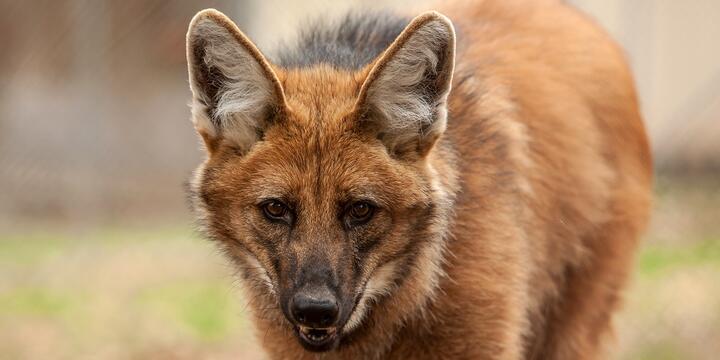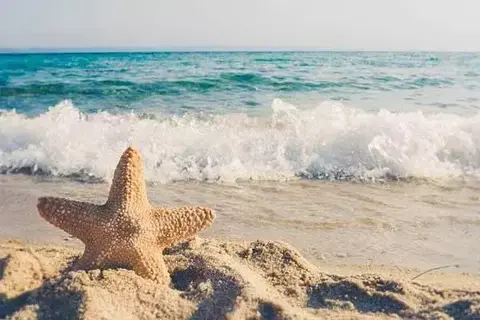Interesting Maned Wolf Facts
Camilo WalkerThe maned wolf got its name thanks to the Greek language and is translated as “red or golden dog”. And indeed, in the photo, you can see a fox rather than a wolf. It is a graceful redhead with long legs, black boots, and a smart face. Despite its harmless appearance, it is a predatory animal. The wool is very fluffy and frequent with a reddish color and dark tanning. In moments of danger becomes on the neck of the tube vertically, thus fully justifying the name of the animal. It is a good camouflage while hunting. There are other interesting facts about the maned wolf. The beast hunts small rodents, birds, fish, clams. If in its area of interest are farms, small lambs, pigs, and domestic chickens can become prey. In the dry months, wolves are united in packs. But by its nature, it is a single animal. Males are always more active than females. They communicate with each other by howling, mostly at night, telling their congeners who is the owner of the area. A she-wolf gives birth to two to seven wolves, both parents are involved in the upbringing of calves. We have collected for you the most interesting facts about maned wolves.
7 facts about the maned wolf
 Image from nationalzoo.si.edu
Image from nationalzoo.si.edu1.Despite its resemblance to a fox, the animal is not related to either foxes or wolves. But as a predator maned wolf is well versed in the techniques of hunting prey and ambush attacks.
2.The jaws are poorly developed, so small food is swallowed entirely, and in the diet there is vegetation. It eats local fruits and berries with pleasure.
3.maned wolf has paws of different lengths: the front ones are shorter than the back ones. This body structure allows you to easily run up a mountain while hunting. Long paws perfectly allow you to see the terrain.
4.The maned wolf habitat is only South America. It prefers flat areas with a temperate climate.
5.Babies are born with black wool and with the same length of limbs. But in the process of growth legs acquire an inherent species for the animal.
6.It has a specific smell of hemp. This is a deterrent factor in the habitats, but at the same time attracts a certain category of visitors in zoos.
7.If you need to dig a hole, it uses not the front paws, but only teeth. Probably because of the lack of training of their feet, mane wolf is not considered a good runner.
Top 3 most interesting facts about the maned wolf
1.The highest among the representatives of the family of dogs in South America. The height in the crest reaches 77-85 cm. Long paws help to track down prey in thick and high grass.
2.In nature, wolves live alone, except for the mating period. But even during this time they hunt and sleep in different places. Their life expectancy is up to 17 years in the wild. In zoos live from 10 to 12 years.
3.One of the ancient species. The maned wolf ran and hunted near mammoths.
Maned wolf: natural enemies, population
Until now, no natural enemies of the animal are known. Its main enemy is considered to be man, because of its activities – deforestation, reducing the area and the usual places of hunting. Farmers take the most clever ways to protect livestock and pastures from the raids of redheaded neighbors. Animals also suffer at the hands of poachers. Residents have a belief that the eyes, skin, and tail of the animal are gifted with magic. They make various potions, amulets, and just souvenirs for tourists. Curiously, but a man is not attacked by a wolf.
The habitat of the four-legged south and north of South America. In Brazil, the number has decreased to 2000 individuals. The population density – for 300 km one animal is found. Therefore, Brazil and Argentina have adopted a law prohibiting wolf hunting. In the International Red List, this species is marked as “an endangered species”.
Maned Wolf Facts
 Image from nationalzoo.si.edu
Image from nationalzoo.si.eduThe maned wolf is one of the largest canines on the planet and is the tallest of all wild canids. These wolves are omnivorous and love to eat the lobeira fruit, which resembles a tomato and is sometimes referred to as the ‘fruit of the wolf.’ They also feed on fish, mollusks, and small rodents and rabbits. Though they are similar to the true North American wolf in their diet, the maned whelp differs in its temperament and behavior. They are very timid and gentle and tend to tap the ground to flush their prey, rather than pounce and catch their prey.
Although the Maned wolf is not endangered, they face a number of threats including habitat loss, human development, and automobile collisions. While there is no specific threat level for this wolf species, its numbers have decreased enough that it has been classified as a near-threatened species by the International Union for Conservation of Nature (IUCN). The male and female maned wolves are monogamous, raising young together. When they are mating, they spray urine that has a distinctly weedy smell. The young remain under the care of their parents for one year before they are able to join the pack. Their long legs and fox-like faces give them a distinctive look, and they are able to erect their mane to appear larger when threatened.
Unlike the red fox, the maned wolf grows very slowly. The pups are not capable of reproducing until about two years old. In captivity, male maned wolves regurgitate food to feed their pups. The average lifespan of a male-maned wolf in captivity is about seven years. The first video shows the mother and pup at 11 days. The mother and pups are the same age as the males.
The maned wolf is the largest canine in South America. It weighs between twenty and thirty kilograms (44-66 lb) and can reach 90 cm at the withers. It has a thick, reddish coat that protects it from predators. The maned wolf lives in a variety of habitats. It primarily lives in open grasslands, but can sometimes be seen hunting in pastures. These wolves do not attack livestock but are usually killed by dogs or people in the area.
The maned wolf is monoestrous but is not monogamous. They are primarily monogamous and live independently, except during the breeding season. In the wild, a male maned wolf will only copulate once during the male’s estrous period, while a female will copulate every two years. The gestation period lasts for about sixty-five days. The pups, which weigh 340 to 430 grams, are born about two months after mating and are independent.
A wolf’s diet is composed of plants, animals, and fruits. Its diet can be as high as fifty percent plant-based. The maned wolf prefers fruits, vegetables, and insects, but it also eats berries, tubers, and small mammals. Its long legs enable it to catch and pounce on prey. The species is considered to be an omnivore, so the population of the species is growing.
The maned wolf is a common sight in the rainforest. In addition to its reddish-brown skin, the maned wolf has long black legs and a distinct black mane. Its white throat bib and tail extend from its neck to its chin. The species is also known for its long tail. A Maned wolf will stay in one location for a year.
The maned wolf has a black-brown mane that stands up when it is threatened. This wolf is not a wolf, but it is in the same genus as the red fox. Its name translates to the golden dog. It has been a protected species in the world for many years. It is also a part of human history. The endangered animal was once hunted and is now protected in the wild.
In the wild, maned wolves eat fruit and vegetables. They will eat any vegetable that is growing near their habitat. The maned wolf will defecate on leafcutter ant nests. The ants use their feces to fertilize fungus gardens. Their poop will eventually fall into garbage piles. They likewise eat loberia fruit. These are believed to be medicinal.
- WildlifePolar Bear Life Cycle: Life And Facts

- WildlifeWhich Monkey Is The Most Dangerous?By Noah Young

- BirdsInteresting Facts About EmusBy Charlotte Green

- RodentsCan A Hamster And A Cat Live Together?By Noah Young

- Wildlife7 Interesting Facts About PumasBy Amelia B

- BirdsWhat Is A Food Of Owls?By Amelia B

- WildlifeStarfish Characteristics And FactsBy Murphy Scott

- WildlifeWhat Do Elephants Eat At The Zoo?By Charlotte Green

- WildlifeHow Is Orangutan Strength And Dangerous?By Khai Dove

- InsectsInteresting Facts About ScorpionsBy Nolan Foster
